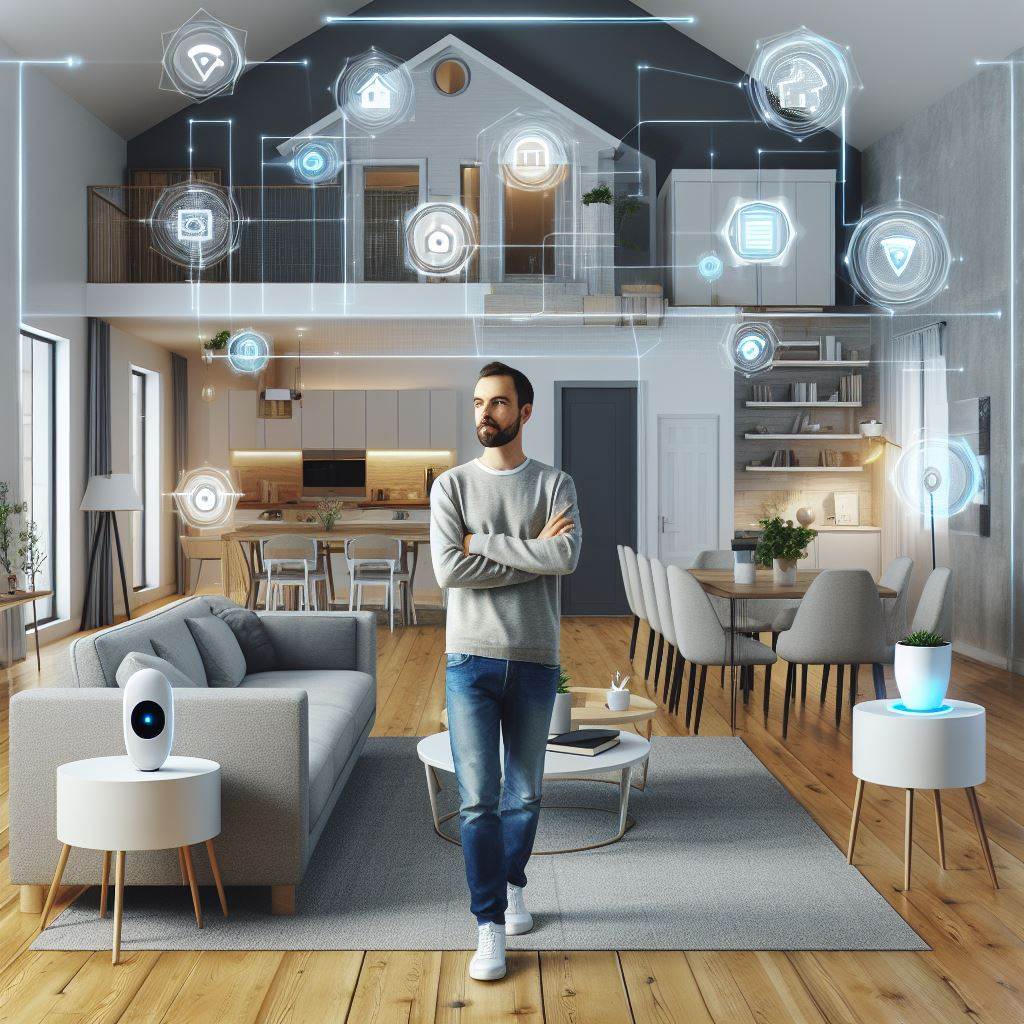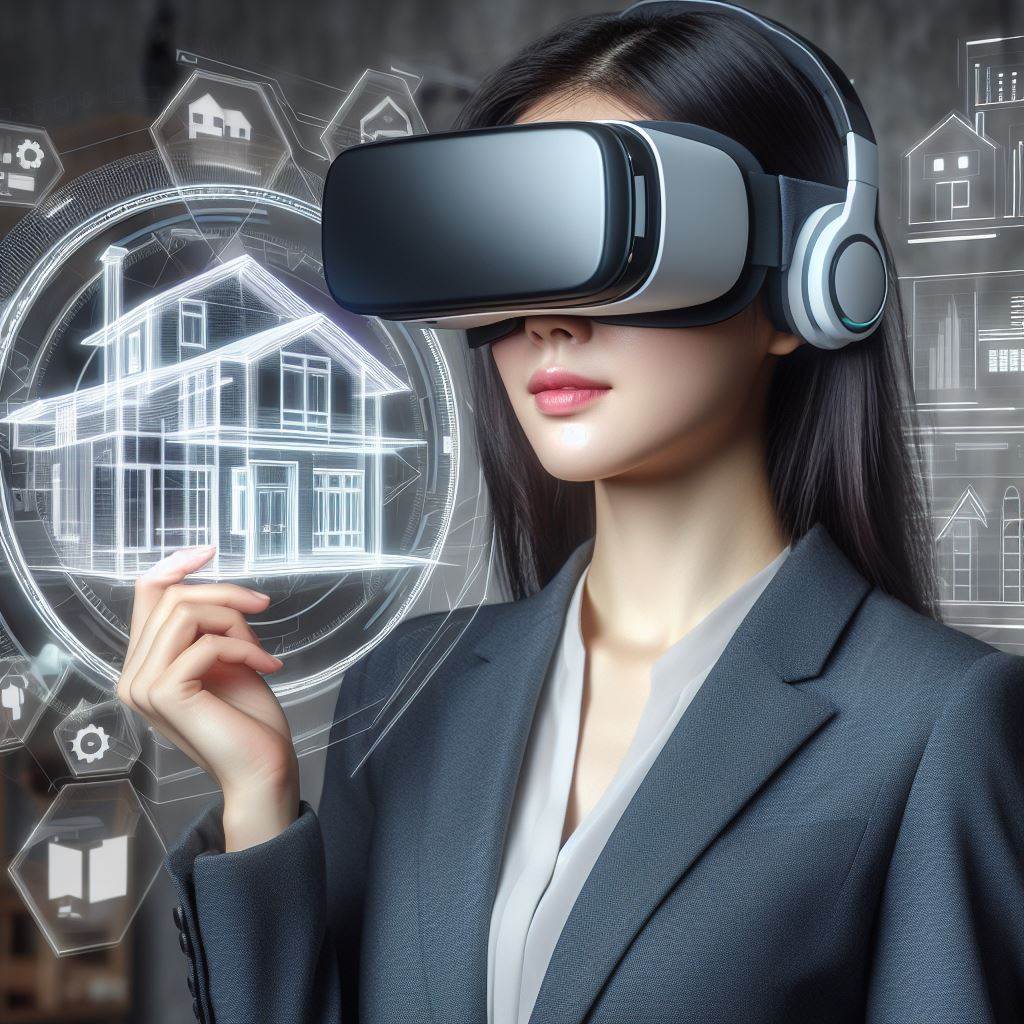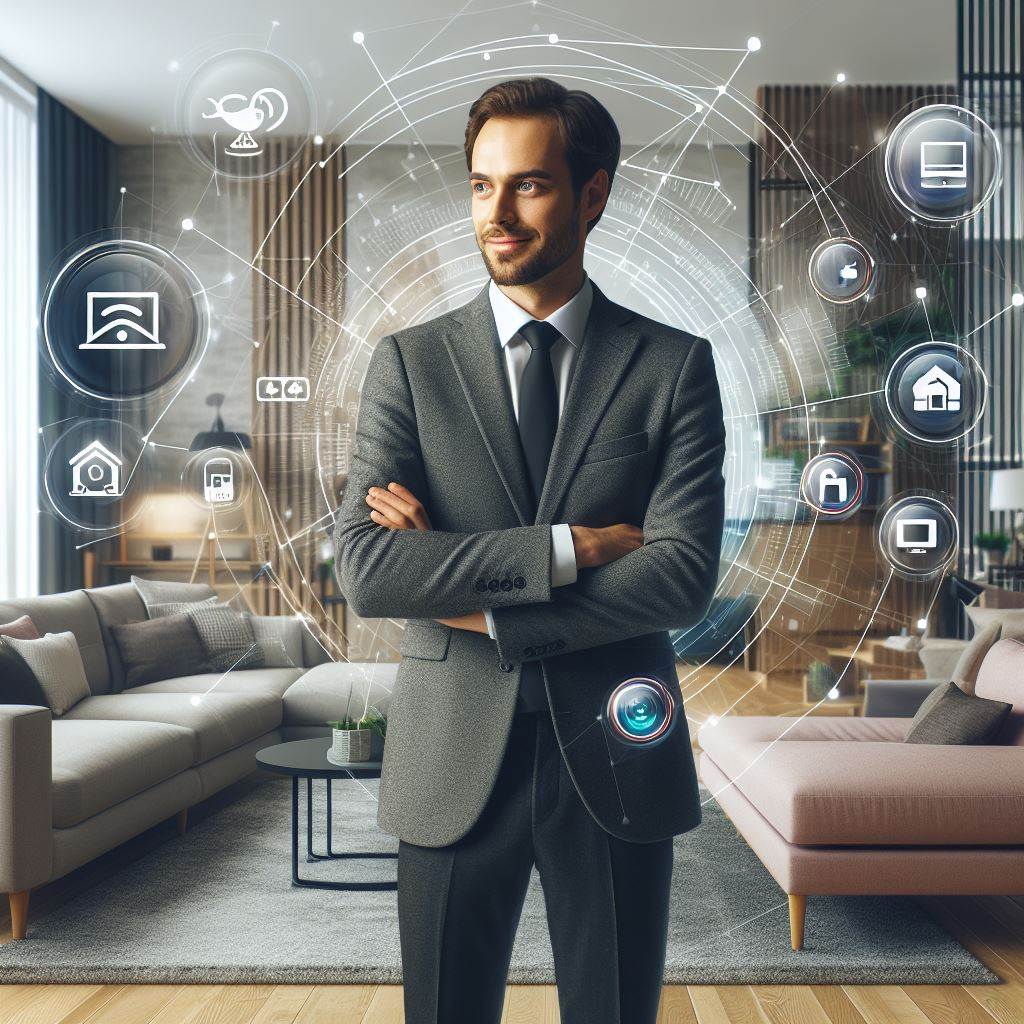Introduction
Augmented Reality (AR) is a cutting-edge technology that seamlessly blends digital elements with the real world, enriching our sensory perception by overlaying virtual information onto physical environments.
Unlike Virtual Reality (VR), which immerses users in entirely simulated environments, AR enhances the existing reality, providing users with an enhanced experience that combines both real-world and digital elements.
Overview of home renovations and its impact
Home renovations constitute a significant aspect of property ownership and management, encompassing a wide range of activities aimed at improving and upgrading residential spaces.
From minor cosmetic enhancements to extensive structural modifications, renovations play a crucial role in enhancing comfort, functionality, and aesthetic appeal while also increasing property value.
The impact of home renovations extends beyond mere aesthetic improvements.
Renovations can significantly enhance the quality of life for homeowners by addressing functional deficiencies, improving energy efficiency, and accommodating changing lifestyle needs.
Additionally, renovations contribute to the revitalization of neighborhoods and communities, promoting economic growth and social well-being.
The rise of technology in various industries
The rapid advancement of technology has transformed numerous industries, revolutionizing how we live, work, and interact with the world around us
From healthcare and education to entertainment and manufacturing, technological innovations have reshaped traditional practices, driving efficiency, productivity, and creativity.
In particular, the integration of digital technologies such as artificial intelligence, machine learning, and augmented reality has ushered in a new era of possibilities across various sectors.
These technologies have enabled unprecedented levels of automation, personalization, and connectivity, empowering individuals and organizations to achieve previously unimaginable feats.
As we delve deeper into the digital age, the convergence of technology and everyday life continues to accelerate, presenting endless opportunities for innovation and growth.
In this context, the rise of augmented reality in home renovations exemplifies the transformative potential of technology to revolutionize age-old practices and redefine the way we perceive and interact with our living spaces.
The Need for Innovation in Home Renovations
Traditional methods and limitations
Home renovations have traditionally relied on manual labor and traditional construction methods.
These methods often involve a lot of time and effort, making the process slow and cumbersome.
Limitations in traditional methods can also impact the quality and precision of the renovation work.
For example, it can be challenging to visualize the end result or make changes during the process.
The lack of flexibility and adaptability in traditional methods can lead to unsatisfactory outcomes for homeowners.
Increasing demands for customization and personalization
Homeowners today have increasing demands for customization and personalization in their renovation projects.
They want their homes to reflect their unique style and preferences.
This creates a need for innovative solutions that can meet these demands efficiently.
Traditional methods may not be able to provide the level of customization required by homeowners.
Therefore, there is a growing need for technologies that can enhance the renovation experience and offer more options.
Benefits of using technology in the home renovation process
Using technology in the home renovation process can bring numerous benefits to both homeowners and professionals.
One significant advantage is the ability to visualize the final outcome before starting the renovation.
Augmented reality (AR) technology allows homeowners to virtually place and view different design options within their space.
This helps in making informed decisions and ensures that the end result aligns with their vision.
AR also enables professionals to accurately measure spaces and plan renovations with greater precision.
Additionally, technology can streamline project management by offering tools for scheduling, budgeting, and communication.
Collaboration between homeowners, contractors, architects, and designers becomes easier with the use of technology.
Moreover, technology can enhance the efficiency and speed of the renovation process, saving time and resources.
For instance, 3D modeling and virtual reality (VR) can simulate the renovation to identify potential issues.
This allows for modifications to be made beforehand, avoiding costly errors during the actual construction.
In fact, the need for innovation in home renovations is driven by the limitations of traditional methods and the increasing demands for customization and personalization.
Technology, especially AR, offers significant benefits in terms of visualization, precision, project management, and efficiency.
Embracing these technological advancements can revolutionize the home renovation industry, providing homeowners with a more satisfactory and streamlined experience.
Read: AI and the Future of Real Estate Negotiations
The Basics of Augmented Reality
Explanation of what AR is
Augmented Reality (AR) is a technology that superimposes computer-generated images onto the real world.
AR enhances the real-world environment by adding digital information, such as 3D models, text, or animations.
It allows users to interact with virtual elements in real-time, enhancing their perception and understanding of the surrounding environment.
Unlike Virtual Reality (VR), which creates a completely immersive digital experience, AR blends the virtual and real world together.
Examples of AR in various sectors
AR is not a new concept, and it has found applications in various sectors, revolutionizing industries.
In the gaming industry, popular mobile games like Pokemon Go use AR technology to overlay virtual creatures onto the real world.
Retail companies have also embraced AR, allowing customers to virtually try on clothes or visualize furniture in their homes.
AR has been utilized in healthcare to aid surgeons during complex procedures, providing real-time information and guidance.
Industrial sectors use AR to enhance worker safety and productivity by providing them with virtual instructions and real-time data.
How AR works and its potential applications in home renovations
AR works by using cameras and sensors to track the real-world environment and project virtual elements accordingly.
In home renovations, AR can be the game-changer that simplifies the process and helps homeowners visualize the end result.
Instead of relying on architectural plans or 2D images, AR allows users to see the potential changes in real-time.
Using AR apps or glasses, homeowners can see how different paint colors, furniture, or decorations would look in their actual space.
AR can also assist in measuring spaces accurately, eliminating the need for manual measurements and reducing the chances of errors.
Furthermore, AR can provide step-by-step instructions for DIY projects, helping users understand the process and complete tasks efficiently.
AR can facilitate communication between homeowners and contractors by allowing them to collaborate virtually and share design ideas.
The potential applications of AR in home renovations are vast, spanning from kitchen remodeling to landscaping.
Homeowners can virtually visualize the layout of their new kitchen, experiment with different cabinet designs, or even change the flooring.
AR can also contribute to sustainable living by helping homeowners calculate the energy efficiency of their homes and suggest improvements.
Moreover, AR can assist in home maintenance by providing visual guides for repairs or installations, simplifying complex tasks.
In essence, Augmented Reality is a powerful technology with numerous applications across various sectors.
Its ability to enhance the real world opens up endless possibilities, even in the realm of home renovations.
From visualizing design changes to assisting in measurements and DIY projects, AR can revolutionize how we transform our living spaces.
AR in Home Renovations: Tools and Features
In recent years, augmented reality (AR) has emerged as a game-changing technology in the field of home renovations
AR offers a range of tools and features that revolutionize the way homeowners plan and execute their remodeling projects.
These tools not only streamline the process but also provide a realistic visualization of the end results.
Let’s explore some of the key tools and features offered by AR in home renovations:
Virtual reality modeling and visualization
Virtual reality modeling and visualization is one of the most exciting aspects of AR in home renovations.
With AR tools, homeowners can create a virtual model of their space and experiment with various design options.
This allows them to visualize how different materials, colors, and layouts would look in their home before making any actual changes.
It helps to eliminate the guesswork and ensures a more informed decision-making process.
Interactive design and virtual fitting
AR enables interactive design and virtual fitting, which greatly simplifies the selection process for homeowners.
Instead of relying on physical samples or swatches, AR allows users to virtually try out different design elements, such as furniture, flooring options, or paint colors, in their actual space.
This feature eliminates the need for time-consuming and costly trial-and-error processes, saving both time and money.
Real-time product selection and recommendations
AR tools provide real-time product selection and recommendations, making it easier for homeowners to find the right materials and products for their renovation projects.
By scanning a room or an object, AR technology can instantly provide information about available options, prices, and even user reviews.
This helps homeowners make well-informed decisions and ensures they choose products that align with their preferences and budget.
Accurate measurements and spatial planning
Accurate measurements and spatial planning are crucial for successful home renovations.
AR offers advanced measurement tools that enable precise measurements of rooms, walls, and furniture.
This eliminates the need for traditional measuring tapes and minimizes the chances of errors.
Spatial planning features in AR tools allow homeowners to arrange and visualize furniture and other elements in their space, ensuring optimal utilization and functionality.
Overall, the rise of AR in home renovations has brought about a paradigm shift in the industry.
The tools and features offered by AR not only make the planning and design process more efficient but also empower homeowners to make better decisions.
From virtual reality modeling and visualization to interactive design and real-time product recommendations, AR has revolutionized the way homeowners approach and execute their remodeling projects.
With its ability to offer a realistic preview of the end results, AR has become an indispensable tool for anyone looking to renovate their home.
In the next section, we will delve into the benefits of AR in home renovations and how it has transformed the overall remodeling experience. Stay tuned!
Read: AR: Enhancing Real Estate Marketing
Benefits of Integrating AR in Home Renovations
Improved decision-making process for homeowners
Homeowners can use AR technology to visualize different design options and make informed decisions.
They can virtually try out various materials, colors, and layout arrangements before committing to any renovation plans.
This allows them to have a clearer understanding of how their home will look after the renovation.
The ability to see the final result beforehand reduces the risk of making costly design mistakes.
AR empowers homeowners by giving them a virtual, interactive preview of their renovated space.
Time and cost-saving potential
Integrating AR in home renovations can significantly save time and money for homeowners.
Traditionally, homeowners rely on physical samples and prototypes for decision-making.
This involves time-consuming visits to showrooms and multiple discussions with contractors.
AR eliminates these hassles by providing a digital representation of design ideas in real-time.
Homeowners can explore numerous options virtually, without the need for physical items.
By reducing the number of physical iterations, the overall renovation timeline is shortened.
Additionally, the elimination of unnecessary physical prototypes saves costs associated with material production.
Enhanced collaboration between homeowners and contractors
AR technology fosters better communication and collaboration between homeowners and contractors.
Both parties can access a shared platform to visualize and discuss design ideas in real-time.
This eliminates misunderstandings and ensures that everyone is on the same page.
Homeowners can provide immediate feedback and make changes on-the-spot, improving efficiency.
Contractors can address any concerns or limitations in real-time, avoiding potential rework.
The collaborative nature of AR streamlines the renovation process and improves project outcomes.
Opportunities for creative experimentation
Integrating AR in home renovations opens up endless possibilities for creative experimentation.
Homeowners can explore unconventional designs and layout arrangements without the fear of commitment.
They can experiment with different styles, colors, and furniture placements, pushing boundaries.
AR allows homeowners to think outside the box and visualize ideas that were previously difficult to envision.
With AR, homeowners can tap into their creativity and transform their living spaces into unique expressions.
In short, integrating AR technology in home renovations brings several benefits to homeowners.
It improves the decision-making process, saves time and costs, enhances collaboration, and encourages creative experimentation.
AR facilitates a more efficient and satisfying renovation experience, ensuring homeowners achieve their dream homes.
Embracing AR in home renovations is a step towards a future where innovation meets personalization.
Read: VR: Transforming Architectural Plans

Challenges and Limitations of AR in Home Renovations
In spite of its many advantages, the integration of augmented reality (AR) in home renovations comes with several challenges and limitations that need to be addressed.
Initial costs and accessibility issues
- Implementing AR technology for home renovations can be costly, making it a barrier for some homeowners.
- The required hardware and software for AR may not be easily accessible to all consumers.
- Investing in AR devices and applications might not be financially viable for small-scale renovation projects.
- Ensuring affordability and widespread availability of AR technology is crucial for its successful adoption in home renovations.
Skill requirements and adoption barriers
- Utilizing AR tools in home renovations often requires specific technical skills and expertise.
- Contractors and homeowners need to learn how to operate AR devices and software effectively.
- Not all contractors may be willing to invest time and effort into learning AR technology.
- Resistance to change and reluctance to adapt to new technologies can hinder the adoption of AR in home renovations.
Privacy and data security concerns
- AR applications in home renovations involve capturing visual data of living spaces, raising privacy concerns.
- Homeowners may worry about the security of their personal and property data collected during AR renovation processes.
- Ensuring proper data encryption, secure storage, and responsible data handling practices is essential.
- Establishing regulations and guidelines to protect user privacy and prevent misuse of personal data is necessary.
Addressing these challenges and limitations is vital for the successful integration of AR technology in home renovations.
By finding solutions to the cost, accessibility, and skill-related issues, AR can become more widely adopted.
Collaborations between technology developers, contractors, and homeowners can drive innovation and overcome adoption barriers.
Furthermore, privacy and data security concerns can be addressed through transparent policies and regulations.
Proactive measures should be taken to ensure that personal information remains confidential and protected.
As AR continues to improve and become more affordable and accessible, its potential in home renovations will expand.
Overcoming these challenges will pave the way for a future where AR plays a significant role in transforming home renovation experiences.
With its ability to visualize designs, facilitate communication, and streamline decision-making, AR has the power to revolutionize the industry.
While there are challenges to overcome, the benefits offered by AR in home renovations make it an exciting and promising technology.
By embracing innovation and embracing the potential of AR, homeowners can benefit from enhanced renovation experiences.
Ultimately, the rise of AR in home renovations marks a new era of possibilities, enabling homeowners to create their dream spaces with ease and confidence.
Read: Machine Learning: Changing Property Valuations
Case Studies: Successful Implementation of AR in Home Renovations
Examples of companies utilizing AR technology effectively
- Home Depot: The retail giant employs AR technology to enhance customer experience by offering virtual design consultations.
- Lowe’s: Using AR, Lowe’s offers the “View in Your Space” feature, allowing customers to preview furniture in their homes before purchasing.
- Ikea: The popular furniture retailer utilizes AR to enable customers to virtually place furniture in their homes, ensuring the perfect fit.
Real-life projects and their outcomes
Project 1: Smith Residence Remodeling
By using AR, the Smiths were able to visualize different paint colors and textures on their walls, saving time and effort.
The AR experience helped them choose the right furniture layout, avoiding costly mistakes during the renovation process.
The project resulted in a stunning transformed living space that exceeded the Smiths’ expectations.
Project 2: Anderson Kitchen Renovation
AR technology allowed the Andersons to try out various kitchen layouts, ensuring optimal functionality and efficient use of space.
The Andersons were able to explore different cabinet styles, countertop options, and appliance placements, leading to an informed decision.
The AR-guided renovation resulted in a modern and functional kitchen that perfectly fit the Andersons’ needs.
Project 3: Johnson Bathroom Upgrade
Using AR, the Johnsons could visualize different tile patterns and colors, making it easier to choose the right one for their bathroom.
The AR experience helped them understand the impact of various lighting fixtures, enhancing the ambiance of their new bathroom.
The Johnsons achieved a luxurious and spa-like bathroom retreat, thanks to the successful implementation of AR technology.
Project 4: Thompson Outdoor Makeover
AR technology enabled the Thompsons to see how different landscaping elements, such as plants and hardscapes, would look in their yard.
The AR-guided design allowed them to experiment with various outdoor furniture arrangements and decide on the perfect layout.
The Thompsons’ outdoor space transformed into an inviting oasis, blending seamlessly with their home’s overall aesthetics.
In general, these case studies demonstrate the successful implementation of AR technology in home renovations.
By utilizing AR, companies like Home Depot, Lowe’s, and Ikea enhance the customer experience, while real-life projects highlight the positive outcomes achieved through AR-guided renovations.
With AR, homeowners can visualize and make well-informed decisions, resulting in transformed and personalized living spaces.
AR is revolutionizing the home renovation industry, making it more accessible and exciting for homeowners.
Future Outlook: The Potential of AR in Home Renovations
Predicted advancements in AR technology
- Improved visual fidelity and realism
- Enhanced object recognition and tracking capabilities
- Integration of depth sensing for more accurate measurements
- Development of wearable AR devices for hands-free interactions
- Integration with voice and gesture recognition for intuitive control
Integration with other emerging technologies (e.g., AI, IoT)
- AI-powered algorithms to analyze home renovation data and provide personalized recommendations
- Integration with IoT devices for seamless control of smart home features during renovations
- Collaboration between AR and robotics for automation and efficiency in construction tasks
- Utilization of machine learning to improve AR’s ability to identify and understand architectural elements
- Exploration of blockchain technology for secure and transparent home renovation transactions
Anticipated impact on real estate industry and home renovation market
The rise of AR in home renovations is poised to revolutionize both the real estate industry and the home renovation market.
For real estate agents, AR can provide a compelling tool to showcase properties to potential buyers.
By leveraging AR technology, agents can offer virtual tours and allow buyers to envision the potential of a space through virtual staging.
Additionally, AR can enable home buyers to virtually modify and visualize renovations before making a purchase.
This not only facilitates decision-making but also empowers buyers to see the true value and possibilities of a property.
In the home renovation market, AR has the potential to streamline the entire process.
With AR, homeowners can digitally overlay new design elements onto their existing spaces, allowing them to visualize and iterate on ideas before committing to expensive construction work.
AR can also act as a guide during the renovation process, providing step-by-step instructions, measurements, and interactive visualizations to assist homeowners and contractors.
This can lead to improved accuracy, reduced costs, and faster project completion times.
Furthermore, the integration of AR with AI and IoT can enhance the overall renovation experience.
AI algorithms can learn from user preferences and past projects to provide personalized recommendations, while IoT devices can seamlessly interact with AR to control smart home features.
The anticipated impact of AR in the real estate industry and home renovation market is significant.
It has the potential to attract more buyers, increase property values, streamline renovation processes, and drive innovation in the construction industry.
As AR technology continues to advance and integrate with other emerging technologies, we can expect a future where home renovations are elevated to new heights of efficiency, creativity, and customer satisfaction.
Conclusion
Throughout this post, we’ve delved into the burgeoning influence of augmented reality (AR) in the realm of home renovations.
We’ve dissected its multifaceted applications and explored how it revolutionizes traditional renovation processes.
B. The transformative potential of AR in home renovations cannot be overstated.
By seamlessly integrating digital overlays onto physical spaces, AR empowers homeowners and professionals alike to envision, plan, and execute renovation projects with unprecedented precision and efficiency.
It’s imperative to encourage both homeowners and professionals to wholeheartedly embrace AR in their renovation endeavors.
By adopting AR tools and technologies, homeowners gain the ability to visualize design concepts in real-time, make informed decisions, and mitigate costly errors.
Likewise, professionals in the renovation industry stand to benefit significantly from integrating AR into their workflows.
From architects and interior designers to contractors and builders, AR offers a powerful toolkit for enhancing collaboration, streamlining communication, and delivering exceptional results.
Embracing AR isn’t just about keeping pace with technological advancements—it’s about unlocking new possibilities and elevating the renovation experience for all involved parties.
By harnessing the capabilities of AR, homeowners can embark on their renovation journeys with confidence, while professionals can showcase their expertise in innovative ways.
The rise of AR in home renovations marks a paradigm shift in how we conceptualize, plan, and execute residential remodeling projects.
By leveraging AR’s transformative potential, we pave the way for a future where creativity, efficiency, and precision converge to redefine the art of home improvement.
Let us embrace AR wholeheartedly, forging a path towards a more immersive, intuitive, and rewarding renovation experience.




